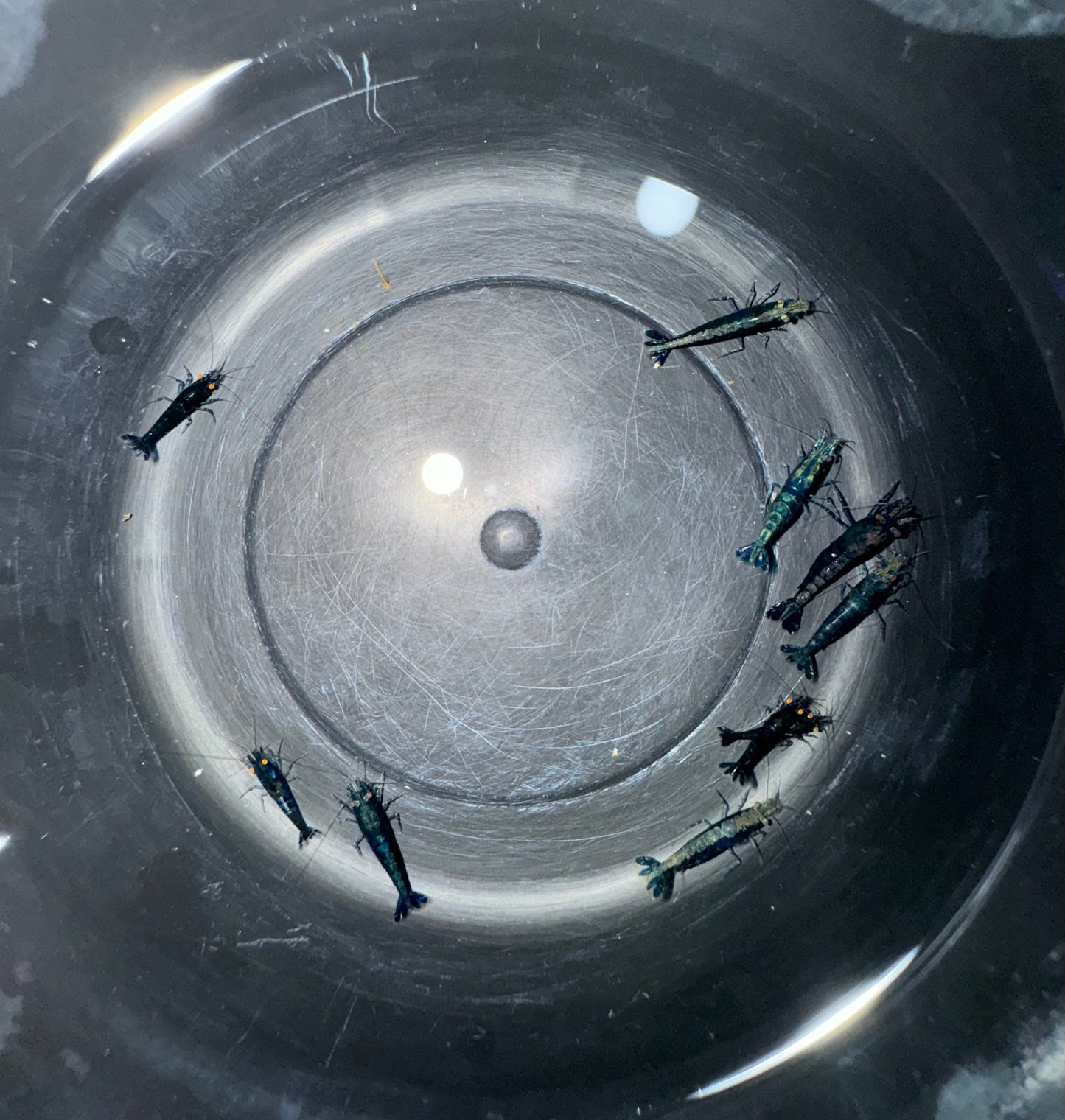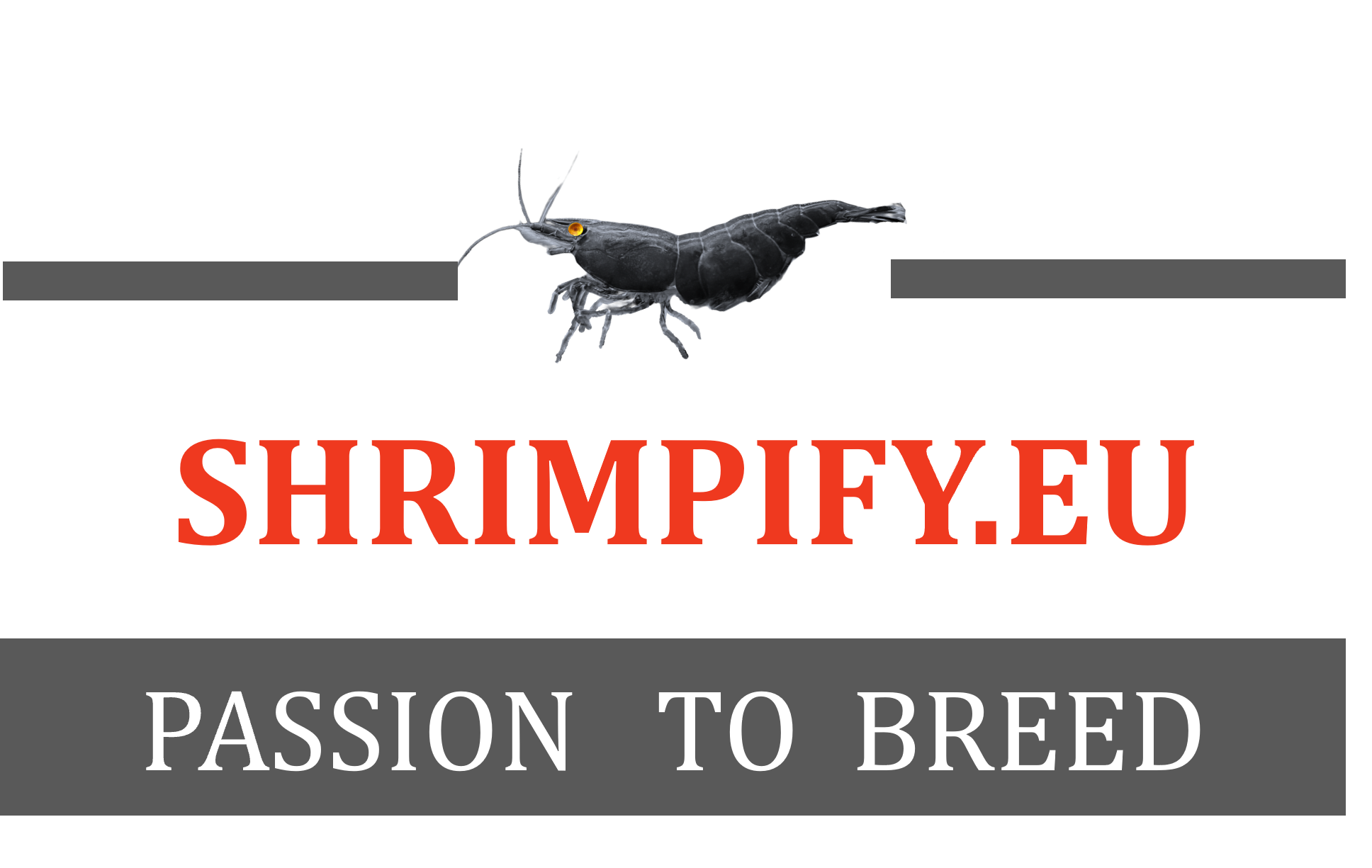DIY Neocaridina "Blue Sapphire OE" breeding group
DIY Neocaridina "Blue Sapphire OE" breeding group
With our do-it-yourself (DIY) Blue Sapphire OE breeding group you can cross your own Blue Sapphire strain with orange eyes (OE) through simple breeding steps.
The breeding group is composed as follows:
- 4x Black Sapphire OE male
- 6x Blue Sapphire females (at least 2 females with back stripe)
Size for sale: When we catch them, we make sure that all animals we sell are already sexually mature. We catch the males with the best of intentions, but we cannot rule out the possibility that one of the animals might turn out to be a female later. We therefore do not guarantee the sex of the males with the orange eyes. Males are about 1 cm in size, while females are about 1.5 cm, so mating can begin immediately.
The procedure for crossing: The procedure: There are 4 simple steps necessary, which I have explained here .
General
Neocaridina with orange eyes? For about 2 years we have been offering offspring of our Neocaridina breeding lines with orange eyes (OE). The inheritance of the orange eyes is stable and they can also be crossed into other color varieties. Purely externally, the orange eyes of the Neocaridina can be distinguished from the orange eyes of the tiger shrimp, as they have a dark spot in the middle, which may indicate residual pigments. We have published a detailed report on these animals in the Caridina magazine (issue 2/2022). You can find more on this topic here .
Keeping and breeding: Like all dwarf shrimps of the Neocaridina genus, these animals are very adaptable and can usually be kept in tap water (18 - 26 °C) without any problems. In our facility, the tap water has the following values: pH 7.6, gH 10; kH 9, conductivity 600uS, 22 °C. The animals feed on conventional fish food, algae growth and dead animal and plant material. This means that they are ideal at using up leftovers and contribute to the biological balance in the aquarium. Keeping them with small and medium-sized aquarium fish can work, but it is recommended to provide sufficient hiding places such as moss and roots. Under optimal conditions, animals quickly grow into lively colonies.
Share


Don't miss any updates on our breeding projects!
Receive updates conveniently via email.



